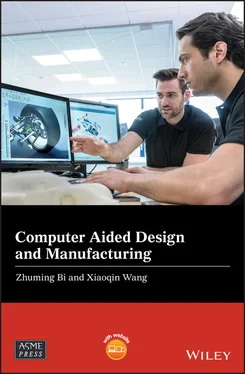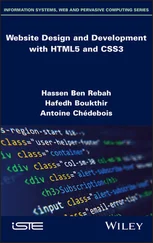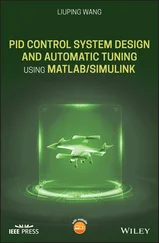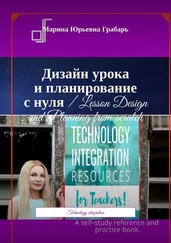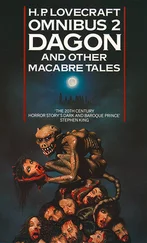1 Cover
2 Series Preface Series Preface The Wiley‐ASME Press Series in Mechanical Engineering brings together two established leaders in mechanical engineering publishing to deliver high‐quality, peer‐reviewed books covering topics of current interest to engineers and researchers worldwide. The series publishes across the breadth of mechanical engineering, comprising research, design and development, and manufacturing. It includes monographs, references and course texts. Prospective topics include emerging and advanced technologies in Engineering Design; Computer‐Aided Design; Energy Conversion & Resources; Heat Transfer; Manufacturing & Processing; Systems & Devices; Renewable Energy; Robotics; and Biotechnology.
3 Preface
4 About the Companion Website
5 1 Computers in Manufacturing1.1 Introduction 1.2 Computer Aided Technologies (CATs) 1.3 CATs for Engineering Designs 1.4 Architecture of Computer Aided Systems 1.5 Computer Aided Technologies in Manufacturing 1.6 Limitation of the Existing Manufacturing Engineering Curriculum 1.7 Course Framework for Digital Manufacturing 1.8 Design of the CAD/CAM Course 1.9 Summary 1.10 Review Questions References
6 Part I: Computer Aided Design (CAD) 2 Computer Aided Geometric Modelling2.1 Introduction 2.2 Basic Elements in Geometry 2.3 Representation of Shapes 2.4 Basic Modelling Methods 2.5 Feature‐Based Modelling with Design Intents 2.6 Interactive Feature‐Based Modelling Using CAD Tools 2.7 Summary 2.8 Modelling Problems References 3 Knowledge‐Based Engineering3.1 Generative Model in Engineering Design 3.2 Knowledge‐Based Engineering 3.3 Parametric Modelling 3.4 Design Intents 3.5 Design Equations 3.6 Design Tables 3.7 Configurations as Part Properties 3.8 Design Tables in Assembly Models 3.9 Design Tables in Applications 3.10 Design Templates 3.11 Summary 3.12 Design Problems References 4 Platform Technologies4.1 Concurrent Engineering (CE) 4.2 Platform Technologies 4.3 Modularization 4.4 Product Platforms 4.5 Product Variants and Platform Technologies 4.6 Fundamentals to Platform Technologies 4.7 Design Procedure of Product Platforms 4.8 Modularization of Products 4.9 Platform Leveraging in CI 4.10 Evaluation of Product Platforms 4.11 Computer Aided Tools (CAD) for Platform Technologies 4.12 Summary 4.13 Design Projects References 5 Computer Aided Reverse Engineering5.1 Introduction 5.2 RE as Design Methodology 5.3 RE Procedure 5.4 Digital Modelling 5.5 Hardware Systems for Data Acquisition 5.6 Software Systems for Data Processing 5.7 Typical Manufacturing Applications 5.8 Computer Aided Reverse Engineering (CARE) 5.9 RE – Trend of Development 5.10 Summary 5.11 Design Project References 6 Computer Aided Machine Design6.1 Introduction 6.2 General Functional Requirements (FRs) of Machines 6.3 Fundamentals of Machine Design 6.4 Kinematic Synthesis 6.5 Kinematics 6.6 Dynamic Modelling 6.7 Kinematic and Dynamics Modelling in Virtual Design 6.8 Summary 6.9 Design Project References
7 Part II: Computer Aided Manufacturing (CAM) 7 Group Technology and Cellular Manufacturing7.1 Introduction 7.2 Manufacturing System and Components 7.3 Layouts of Manufacturing Systems 7.4 Group Technology (GT) 7.5 Cellular Manufacturing 7.6 Summary 7.7 Design Problems References 8 Computer Aided Fixture Design8.1 Introduction 8.2 Fixtures in Processes of Discrete Manufacturing 8.3 Fixtures and Jigs 8.4 Functional Requirements (FRs) of Fixtures 8.5 Fundamentals of Fixture Design 8.6 Types and Elements of Fixture Systems 8.7 Procedure of Fixture Design 8.8 Computer Aided Fixture Design 8.9 Summary 8.10 Design Projects References 9 Computer Aided Manufacturing (CAM)9.1 Introduction 9.2 Computer Aided Manufacturing (CAM) 9.3 Numerical Control (NC) Machine Tools 9.4 Machining Processes 9.5 Fundamentals of Machining Programming 9.6 Computer Aided Manufacturing 9.7 Example of CAM Tool – HSMWorks 9.8 Summary 9.9 Design Problems 9.10 Design Project References 10 Simulation of Manufacturing Processes10.1 Introduction 10.2 Manufacturing Processes 10.3 Shaping Processes 10.4 Manufacturing Processes – Designing and Planning 10.5 Procedure of Manufacturing Processes Planning 10.6 Casting Processes 10.7 Injection Moulding Processes 10.8 Mould Filling Analysis 10.9 Mould Flow Analysis Tool – SolidWorks Plastics 10.10 Summary 10.11 Design Project References 11 Computer Aided Design of Tools, Dies, and Moulds (TDMs)11.1 Introduction 11.2 Overview of Tools, Dies, and Industrial Moulds (TDMs) 11.3 Roles of TDM Industry in Manufacturing 11.4 General Requirements of TDM 11.5 Tooling for Injection Moulding 11.6 Design of Injection Moulding Systems 11.7 Computer Aided Mould Design 11.8 Computer Aided Mould Analysis 11.9 Summary 11.10 Design Projects References
8 Part III: System Integration 12 Digital Manufacturing (DM)12.1 Introduction 12.2 Historical Development 12.3 Functional Requirements (FRs) of Digital Manufacturing 12.4 System Entropy and Complexity 12.5 System Architecture 12.6 Hardware Solutions 12.7 Big Data Analytics (BDA) 12.8 Computer Simulation in DM – Simio 12.9 Summary 12.10 Design Projects References 13 Direct and Additive Manufacturing13.1 Introduction 13.2 Overview of Additive Manufacturing 13.3 Types of AM Techniques 13.4 AM Processes 13.5 Design for Additive Manufacturing (DfAM) 13.6 Summary 13.7 Design Project References 14 Design for Sustainability (D4S)14.1 Introduction 14.2 Sustainable Manufacturing 14.3 Drivers for Sustainability 14.4 Manufacturing and Sustainability 14.5 Metrics for Sustainable Manufacturing 14.6 Reconfigurability for Sustainability 14.7 Lean Production for Sustainability 14.8 Lifecycle Assessment (LCA) and Design for Sustainability (D4S) 14.9 Continuous Improvement for Sustainability 14.10 Main Environmental Impact Factors 14.11 Computer Aided Tools – SolidWorks Sustainability 14.12 Summary 14.13 Design Project References
9 Index
10 End User License Agreement
1 Chapter 1 Table 1.1 Milestones in the 60 year history of CAD development (Computer History... Table 1.2 Types of design activities. Table 1.3 Characteristics of solution spaces and design variables. Table 1.4 Comparison of human designers and computers. Table 1.5 Examples of existing CAD/CAM textbooks (Wang and Bi 2018).
2 Chapter 2 Table 2.1 Coordinate transformation of a point. Table 2.2 Relational structure of pyramid object. Table 2.3 Representation of 2D and 3D curves. Table 2.4 High‐order curves. Table 2.5 Types and features of surfaces. Table 2.6 Manifold and non‐manifold examples in 1D, 2D, and 3D. Table 2.7 Examples of simple objects. Table 2.8 Examples of open objects. Table 2.9 Examples of generic objects. Table 2.10 Equations of common surfaces. Table 2.11 Modelling tools for customized solid primitives.
3 Chapter 3 Table 3.1 Common approaches to define points. Table 3.2 Common approaches to define lines. Table 3.3 Equations for default front, top, and right plane. Table 3.4 Common approaches to define planes. Table 3.5 Common approaches to define curves. Table 3.6 Common approaches to define surfaces.Table 3.7 The operators and functions in the definition of design equations.Table 3.8 Types of design variables in a design table (SolidWorks 2019).
4 Chapter 4Table 4.1 Brief history of CE (MIT 2019).Table 4.2 Twelve drivers for modularization and platform technologies (Stake 200...Table 4.3 Structure comparison of integral and modular products (Huang 2000).Table 4.4 Advantage of modular product design over integral product design (Mikk...Table 4.5 Key concepts relevant to modularization.Table 4.6 Connections of automobile platforms with old models at Ford (Wikipedia...Table 4.7 Three interface types in a product platform.Table 4.8 The design procedure of product platforms.Table 4.9 Metrics in product‐based evaluation of product platforms.Table 4.10 Metrics in market‐based evaluation of product platforms.Table 4.11 The variants of a set of DH parameters.Table 4.12 Number of robot configurations based on discretized DH parameters (DH...Table 4.13 Evaluation and comparison of three robot platforms.Table 4.14 Advantages of using design toolboxes.Table 4.15 Main features of design toolboxes of bearings and weldments in SolidW...Table 4.16 Steps to create and store an entry in design library.
Читать дальше
